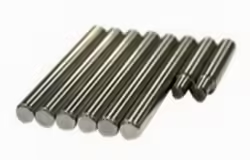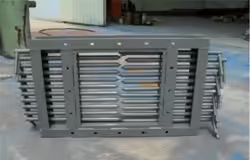
Top 5 Reasons Why 4140 Steel Machinability is Superior
Table of Contents
Introduction
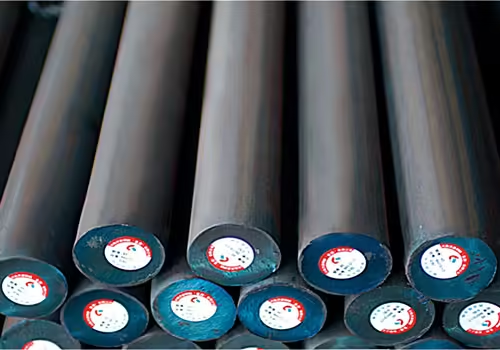
4140 steel is a high-quality, low-alloy steel known for its strength, toughness, and excellent machinability. It’s widely used in industries ranging from automotive to aerospace, manufacturing precision parts, tools, and machinery. Understanding the machinability of 4140 steel is crucial for engineers, machinists, and manufacturers who seek to optimize both performance and cost-efficiency in their operations.
In this article, we will delve into the top five reasons why 4140 steel machinability is considered superior and how its features benefit industries globally. We will explore key attributes like hardness, wear resistance, ease of cutting, and more. Additionally, we will provide useful insights, data, and applications that demonstrate how 4140 steel stands out from other materials.
What Makes 4140 Steel Machinability Exceptional?
1. High Hardenability and Strength-to-Weight Ratio
One of the primary reasons 4140 steel is favored for machining is its excellent hardenability, which allows for the creation of components that are both hard and wear-resistant. This makes it an ideal choice for producing parts that require high durability and strength, such as gears, crankshafts, and heavy-duty automotive components.
The steel’s superior hardness also contributes to its machinability, enabling it to retain strength under pressure without compromising cutting performance. A common challenge when working with other materials is the loss of strength after machining, but 4140 steel maintains its mechanical properties even after being subjected to harsh cutting conditions.
Benefits in Machining:
- Retains mechanical properties even after heat treatment, which is essential for ensuring the longevity of components.
- Offers superior wear resistance, thereby reducing tool wear and overall maintenance costs.
- Higher strength-to-weight ratio than many other alloys, making it an attractive material for parts subject to high-stress conditions.
2. Excellent Wear Resistance for Tool Longevity
4140 steel machinability is particularly exceptional because of its excellent wear resistance. This characteristic significantly extends the lifespan of cutting tools used in the machining process. When machining high-strength materials, the tools often experience friction and abrasion, which can shorten their service life. However, 4140 steel’s ability to withstand such forces means that tools experience less wear over time. As a result, machinists can achieve better finishes and more precise tolerances, essential for industries where precision is critical, such as the automotive and aerospace sectors.
By reducing the frequency of tool changes and downtime, 4140 steel’s wear resistance makes it ideal for high-volume manufacturing environments. Additionally, the increased tool life means lower production costs and less waste.
Machining Benefits:
- Reduced tool wear directly translates into longer tool life and fewer tool changes, improving overall production efficiency.
- Produces improved surface finishes and allows for tighter tolerances, which are essential for high-precision manufacturing.
- More cost-effective in high-volume production environments due to fewer tool replacements and reduced downtime.
3. Easier to Machine in the Annealed Condition
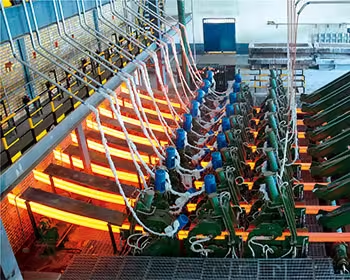
4140 steel’s machinability is also enhanced by its ease of machining in the annealed (softened) state. When in the annealed form, 4140 steel has lower hardness, making it easier to cut and shape without sacrificing its properties after heat treatment. This state allows manufacturers to achieve precise cuts and complex geometries, which are vital for various engineering applications.
Machinists appreciate the fact that annealing 4140 steel offers a good balance between machinability and strength. The steel can be easily turned, milled, drilled, and tapped, with minimal effort required.
Benefits in Machining:
- Annealing reduces the material’s hardness, making it easier to machine with less effort.
- Allows for high-speed cutting with lower energy consumption, resulting in faster cycle times and increased productivity.
- Facilitates precision machining of complex components that require high-quality finishes and tight tolerances.
4. Versatility for Multiple Applications
The machinability of 4140 steel extends beyond just ease of cutting—it is incredibly versatile across a wide range of industries. Whether used in automotive parts, mining equipment, oilfield components, or aircraft parts, 4140 steel’s ability to be machined into various shapes and sizes makes it a highly adaptable material. This versatility means that manufacturers can use the same material for different projects without the need to switch to other types of steel, reducing costs and improving overall production efficiency.
Moreover, 4140 steel can be heat-treated to suit different applications, allowing it to be customized for specific mechanical properties. For example, a manufacturer might need a particular combination of hardness, strength, and toughness, all of which can be achieved through precise heat treatment of 4140 steel.
Machining Benefits:
- Can be used for a wide range of applications, reducing the need to switch materials during production, which saves time and costs.
- The ability to tailor 4140 steel through heat treatment ensures that it can meet specific mechanical property requirements.
- Offers high flexibility in machining various part types, from small precision components to large structural parts.
5. Cost-Effectiveness and Availability
4140 steel machinability not only offers excellent performance but is also one of the more cost-effective high-strength steels. Unlike some specialty alloys, 4140 steel is widely available from numerous suppliers, which helps maintain competitive pricing. This makes it an attractive option for manufacturers looking to balance performance with cost-effectiveness.
In addition to being affordable, the ease of machining 4140 steel further enhances its cost-effectiveness. Since it is easier to machine compared to other high-strength alloys, manufacturers can save on labor and tooling costs. For industries where large quantities of parts are needed, 4140 steel’s cost-effectiveness provides a significant advantage without compromising on performance or quality.
Benefits in Machining:
- Competitive pricing due to its widespread availability ensures that manufacturers can purchase 4140 steel at a cost-effective rate.
- Reduces production costs by cutting down on labor and raw material expenses, thanks to its machinability.
- Suitable for both small-scale and large-scale manufacturing processes, making it a versatile material for various production needs.
How to Optimize Machining of 4140 Steel
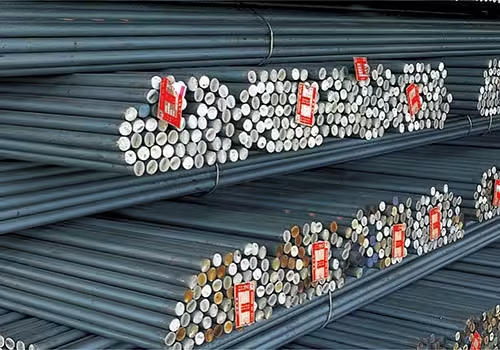
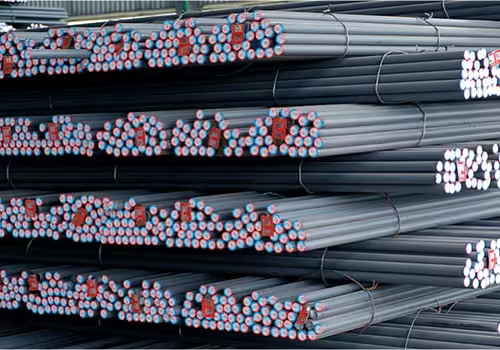
When it comes to machining 4140 steel, achieving optimal results requires careful attention to several key factors. This alloy is known for its toughness, wear resistance, and overall strength, but these same characteristics can make it more challenging to machine. By taking the time to adjust cutting parameters, select the right tools, and choose the proper cooling methods, manufacturers can ensure they get the most out of this highly versatile material.
Optimizing the machining process not only improves productivity but also ensures that the final product meets the required quality standards. In this section, we will explore the critical factors that contribute to the successful machining of 4140 steel machinability.
- Cutting Speeds and Feed Rates: As 4140 steel is a tough material, using the right cutting speeds and feed rates is vital. Optimal settings ensure smooth cuts and reduce the chances of workpiece distortion or tool wear.
- Coolant Usage: To prevent excessive heat buildup during machining, it’s important to use the right coolant or lubricant. This will not only improve tool life but also maintain the quality of the machined surface.
- Tool Selection: Choosing high-quality carbide tools can help in achieving excellent results when machining 4140 steel, as these tools can withstand the material’s toughness and high wear resistance.
Table: Comparison of 4140 Steel Machinability with Other Alloys
| Steel Type | Hardness (HB) | Wear Resistance | Machinability Rating (1-10) | Typical Applications |
|---|---|---|---|---|
| 4140 Steel | 200-300 | High | 8 | Automotive, aerospace, manufacturing |
| 1045 Steel | 150-250 | Moderate | 7 | General purpose, machinery |
| M2 Tool Steel | 300-400 | Very High | 6 | Tooling, cutting tools |
| Stainless Steel | 180-220 | Moderate | 5 | Corrosion-resistant components |
The table above shows how 4140 steel compares to other common alloys in terms of machinability. While 4140 steel is not as wear-resistant as materials like M2 Tool Steel, it still offers a higher machinability rating than stainless steel and 1045 steel.
Conclusion
4140 steel’s machinability makes it one of the most versatile and cost-effective materials available for high-performance applications. From automotive components to aerospace parts, 4140 steel provides manufacturers with a balance of strength, durability, and machinability that is hard to match. By understanding the key factors contributing to 4140 steel’s machinability—such as its hardenability, wear resistance, ease of machining in the annealed state, and versatility—manufacturers can leverage its properties to achieve superior results in production processes.
In conclusion, 4140 steel’s machinability not only boosts the efficiency of machining operations but also ensures the production of high-quality components at an affordable cost.
FAQ
What makes 4140 steel so machinable?
4140 steel is machinable because of its balanced composition, which provides a good combination of strength and toughness while still being easy to cut and shape in its annealed form.
How does heat treatment affect 4140 steel machinability?
Heat treatment can alter the hardness of 4140 steel, making it easier to machine in its annealed state, while still retaining its strength and toughness after heat treatment.
What industries benefit most from 4140 steel machinability?
Industries such as automotive, aerospace, oil and gas, and manufacturing all benefit from 4140 steel’s machinability due to its excellent wear resistance, strength, and cost-effectiveness.
Is 4140 steel more cost-effective than other high-strength steels?
Yes, 4140 steel is often more cost-effective than other high-strength steels like M2 tool steel, while still offering excellent machinability and mechanical properties.
Can 4140 steel be used for high-precision parts?
Absolutely. 4140 steel is commonly used for precision parts due to its excellent machinability, which allows for tight tolerances and superior surface finishes.

